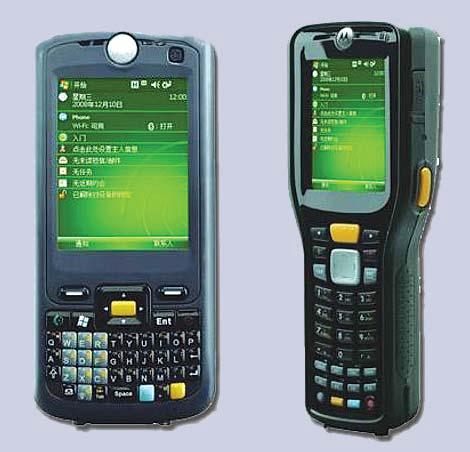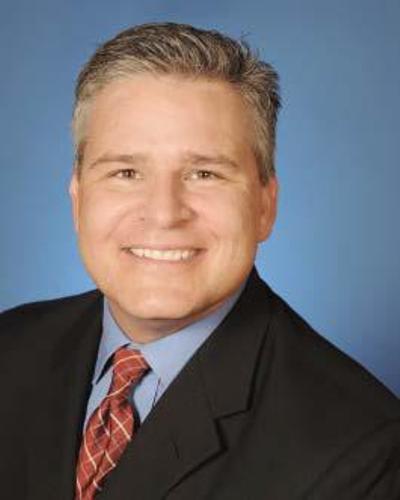A new series of mobile computing device launched by Motorola is all set to revolutionisethe way enterprises work and do business. While these new devices, launched recently inthe Asian market, are offering a wide variety of mobility solutions across industry verticals,healthcare organisations that are looking to create a sophisticated enterprise-level mobile work
environment has much in store from this.
 eHEALTH caught up with Ramesh Sundaraman,Head-Mobile Computing Business, Motorola toget a low down on potential application of thesedevices for healthcare industry.
eHEALTH caught up with Ramesh Sundaraman,Head-Mobile Computing Business, Motorola toget a low down on potential application of thesedevices for healthcare industry.

What are the potential applications ofMotorola FR series mobile computingdevices in hospitals and healthcareenterprises?
Over the last one year we have beendoing pilot projects with our new FRseries devices in several hospitals. Wehave learnt from our experience indeploying mobility solutions there areabout 24 different areas where a hospitalcan potentially mobilise its operations,such as – bedside monitoring ofpatients, pharmacy inventory, medicineadministration, blood bank, operationsand telemedicine.
We have already done significantdeployments in Thailand and HongKong where we have put togetherEnterprise Wireless LAN for buildinghighly secured and effi cient networks.One of the main areas where suchdeployments are made is assetmanagement. To being with, hospitalswere somewhat reluctant aboutdeploying mobility solutions for clinicaloperations; however, they later adoptedthe same, after realising its true value inbringing superior work efficiency andimproving service quality.

How do you go about marketing yoursolutions? Is it only through IT vendorsand SIs or do you also approachhospitals on your own?
If a hospital already has an IT setup, wewould try to work with the vendor whodeployed the solution at the first place.The reason being they are the ones whowould best understand the hospitalsrequirements. Our role is to extendtheir IT infrastructure to offer mobilitysolutions. However, in an absolutelynew setup everything has to be donefrom the scratch. For the value additionthat we do, we try and understand theneeds of our client; however, for actualinstallation and operationalising thesolution we do seek help of the ITpartners.
We also approach hospitalsindependently to understand theirproblems and sometimes to explainthem the benefits of our solution. Wealso update them on latest technologies.For instance, many understand wirelesstechnology and barcode scanning,but very few understand enterprise mobility.
Do you uate applications of HMSvendors to ascertain workabilityand compatibility of your devices/solutions?
If a hospital is already having an ITvendor then not much work is requiredin this respect. It would just be an issueto check for technical compatibility.However, if the customer is installingHMS for the fi rst time then there islot to be done. In such cases, we dovalidate the software from all genericrequirements to ensure that it workswell with all our devices.
With so many solution providers, healthIT market today seems to be highly fragmented.What are your comments?
It is indeed a big challenge for usbecause almost every hospital isdeploying a different package.Nowadays, even different branches ofthe same hospital group would havedifferent HMS packages. At our end,we try to enroll those partners who areengaged with us, but we also try to enrollsome big players offering solutions. Forinstance, IBM is our worldwide partnerand Wipro is our Indian partner whoprovides solutions not just in healthcare but across many other verticals. Ihope we all would gradually evolve inthe process.
What will be your comments in terms oflong term cost advantage for hospitalsfor using mobility solutions?
There are two aspects to it – one is thereturn-on-investment, and other is thetotal-cost-of-ownership. As regardsthe former, it can be readily realisedas the enterprise spends sometimeworking on the mobile platform. Thework effi ciency, performance andservice quality can be dramaticallyimproved over a relatively shortperiod of time. In terms of the later,we have the same architecture acrossour product line which ensures theavailability of all products. Its avery important aspect because oursare consumer-based devices whichcant be phased out, as enterprises make a long-term investmenton them. We also ensure stabilityof the platform and its reliability by providing superior services to ourcustomers.
About MotorolaFR68 & FR6000
 Motorolas FR68 Enterprise DigitalAssistant (EDA) and the FR6000rugged handheld computers (currentlyavailable only in the Asia-Pacifi cmarkets) are full-function 3.5G HSDPA/WAN network mobile computers thatoffer simultaneous voice and high speeddata connectivity, and GPSnavigation. The devices also offerexpanded levels of enterprise-class
Motorolas FR68 Enterprise DigitalAssistant (EDA) and the FR6000rugged handheld computers (currentlyavailable only in the Asia-Pacifi cmarkets) are full-function 3.5G HSDPA/WAN network mobile computers thatoffer simultaneous voice and high speeddata connectivity, and GPSnavigation. The devices also offerexpanded levels of enterprise-class
features in a highly compact formfactor and ergonomics best suited tothe needs of Asian users. Additionalfunctionalities include high resolution3.2 mega pixel auto-focus color camera,and optical character recognition (OCR)functionality in the FR68, and 1D laserscanner, plus additional connectivitythrough wireless LAN (WLAN),Bluetooth® and IrDA. Powerfulcomputing capabilities enabledthrough the Marvell XScale PXA312624MHz processor and Microsoft®Windows® Mobile 6.1 operating systemin the devices ensure ease of integrationwith existing enterprise infrastructure,enhanced security features, afl exible development platform andimproved mobile messaging all in asingle device.
CASE STUDY: The Sir Run Run Shaw Hospital in China Saves More Lives withMotorola Mobility Solution
The Sir Run Run Shaw Hospital is a modern hospital ranked amongst the bestin China and co-managed by the Medical Centre at Loma Linda University inCalifornia. Realising the fact that a hospitals information system is what allowsthem to deliver the highest level of service, it undertook the task of upgradingand modernising its IT infrastructure by deploying Motorolas high-performancewireless medical system that can integrate its existing information systems andbring seamless, real-time connectivity across the organisation.
The Solution
The solution includes WS5100 wireless switches, AP300 network antennae andMC50 handheld mobile terminals. The WS5100 provides powerful, centralisedintelligence and management capabilities and the MC50 is an enterprise digitalassistant combined with barcode scanning capabilities. It features advanced datacapture, fl exible voice and data communication capabilities.
The Benefits
With wireless LAN covering the entire hospital the medical staff can nowaccess the information system from anywhere in the building. Doctors and urses just need to scan a patients barcode wristband with the MC50 whichidentifi es them immediately and retrieves their medical history automatically.The medical and nursing staff can now work beside the patientsbedside, giving them more attention while at the same time ensuring safeand accurate treatment. Doctors can now verify patients medical information realtime, right by the patients bedside and take prompt decisions based on patientsimmediate needs. Interestingly, some of these decisions were actually life-saving.In addition, it helps hospital staff to achieve true mobility – drug management,sample collection, blood transfusion tests, asset and material management,remote patient monitoring and nurse calls can be deployed wirelessly, increasingthe effi ciency rate of many common activities.
From a patients point of view, once the admission procedures have beencompleted the system notifi es the relevant doctor in real time, allowing for theefficient scheduling of consultations or surgery. If additional consultations arerequired, the wireless medical system provides an extremely convenient wayof fi xing the appointment. The MC50 mobile terminal instantaneously sendsthe information to the relevant administrative offi ce, which will arrange forthe appointment via the wireless network. In comparison to the conventionalhandwritten consultation slip, the electronic consultation slip greatly improvesthe effi ciency of hospital staff.
ROI & User Feedback
A cutting edge management model and modern information managementsystem have greatly augmented the competitiveness of the hospital. Thepatient satisfaction level has reached 97%. Amongst similar hospitals in China,Sir Run Run Shaw Hospital has the highest bed turnover rate and the lowestantibiotic usage rate. The average number of hospitalisation days is now only 8.95Said He Chao.
Be a part of Elets Collaborative Initiatives. Join Us for Upcoming Events and explore business opportunities. Like us on Facebook , connect with us on LinkedIn and follow us on Twitter , Instagram.



